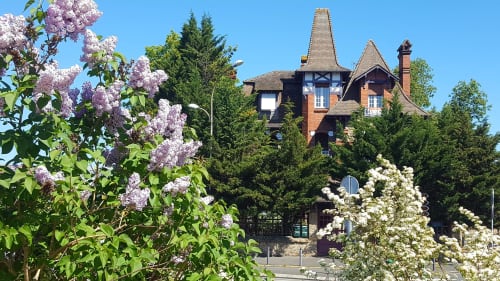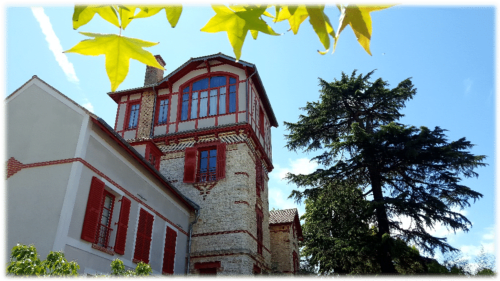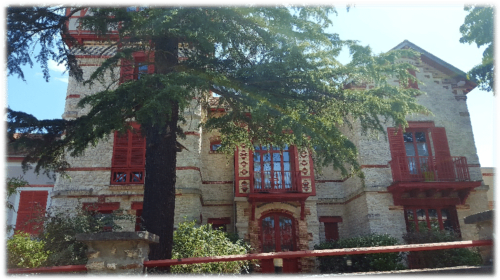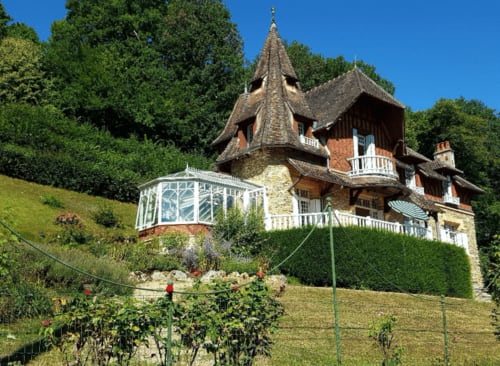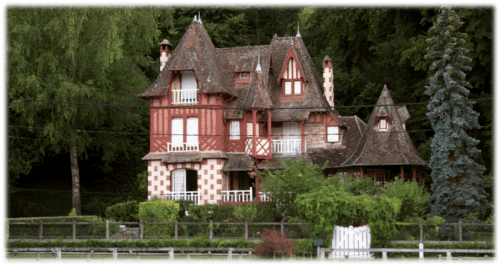Visiting, exploring, travelling

Castle of Blandy-Les-Tours
The castle of Blandy-les-Toursis a medieval castle located in the town of Blandy-les-Tours in the department of Seine-et-Marne, 70 km from Paris, and not far from the castle of Vaux-le-Vicomte. This building was built between the thirteenth and the second half of the fourteenth century.This castle now engages in a permanent dialogue between heritage and artistic creation.

Castle of Fontainebleau
The Château de Fontainebleau is a royal castle of mainly Renaissance and classical styles, near the city center of Fontainebleau (Seine-et-Marne), about 60 kilometers southeast of Paris, France.
Moreover, since 1981, the castle and its park are part of the UNESCO World Heritage.
Moreover, since 1981, the castle and its park are part of the UNESCO World Heritage.

Casltle of Vaux le Vicomte
The castle of Vaux-le-Vicomte, located on the territory of the French commune of Maincy (Seine-et-Marne), 50 km southeast of Paris, near Melun is a castle of the seventeenth century (1658-1661), built for the superintendent of finance of Louis XIV, Nicolas Fouquet. It now belongs to a younger branch of the Marquis de Vogüé.

Barbizon, village of painters
Barbizon is a village nestled comfortably against the western edge of the Fontainebleau forest. Stroll the cobblestone streets and push open the doors of the small stores and art galleries!
Barbizon is one of the mythical places of pre-impressionist painting in France.
As early as 1830, what was still a lumberjack's hamlet welcomed at the Ganne Inn all the painters who came to seek inspiration from the unspoiled nature. Later, they shared their stays between Barbizon and Chailly-en-Bière, finding their subjects in the countryside or the nearby forest of Fontainebleau, painting on the spot.
Barbizon is one of the mythical places of pre-impressionist painting in France.
As early as 1830, what was still a lumberjack's hamlet welcomed at the Ganne Inn all the painters who came to seek inspiration from the unspoiled nature. Later, they shared their stays between Barbizon and Chailly-en-Bière, finding their subjects in the countryside or the nearby forest of Fontainebleau, painting on the spot.

The village of Provins
Provins is a real treasure. With its ancient look, this fabulous medieval city opens the doors of the Middle Ages (Per horus, he per ra!) Half-timbered houses, ramparts, dungeon... Provins is the promise of an enchanting medieval excursion, Jacouille and Messire Godefroy in month.

The village of Moret-sur-Loing
A former stronghold, the picturesque medieval town of Moret-sur-Loing, located on the edge of the Fontainebleau forest and bordering the peaceful waters of the Loing, has inspired many artists and impressionist painters, such as Alfred Sisley who spent the last twenty years of his life here. This postcard-like village is indeed a particularly photogenic picture.

Samois-sur-Seine, village champêtre
In the south of the Seine-et-Marne, discover a village nestled in the heart of the Fontainebleau forest, along the Seine: Samois-sur-Seine. Built around the river, the village is dominated from its entrance by large villas, built between the end of the 19th century and the interwar period.

Milly-la-forêt
Milly-la-Forêt is a French commune located in the south-east of the department of Essonne in the region Île-de-France.It became from the middle of the twentieth century a resort for Parisians and artists, including Jean Cocteau and Christian Dior. Today it is an important tourist center of the department, the capital of aromatic herbs, with a preserved environment between the provinces and the Parisian agglomeration.
Do you dream of discovering some cultural sites off the beaten track, less than 60 km from Paris, accessible by car, train or bicycle? There are a few unsuspected architectural treasures in Seine-et-Marne that have remained off the beaten track. Among them, the "Affolantes" on the banks of the Seine represent a unique architectural style in the Île-de-France region. Along the Seine, south of Melun, stand majestic buildings with atypical charm, which owe their name to a historian named André Châtelain (1932-2011). The bourgeois of the 19th century took up residence here, before many artists such as Renoir or Rosa-Bonheur found their inspiration here. From Anglo-Norman manors to small castles in the neo-Louis XIII style, an eclectic architectural movement is emerging. The most beautiful Affolantes are accessible on foot from the train stations of Melun or Bois-le-Roi. You can also spend the night in one of them, converted into a guest house and a gite (Apakabar Homestay), which provides all the information required for this discovery.
Discover the 10 most beautiful Affolantes accessible by car, bike or even on foot from the train stations of Melun and Bois-le-Roi. Have a nice walk!
To go further :
Laborde MF and Camus D., 2015. Les Affolantes des bords de Seine. Editions du Puits Fleuri, 223 p. (out of print but available at Apakabar Homestay)
Discover the 10 most beautiful Affolantes accessible by car, bike or even on foot from the train stations of Melun and Bois-le-Roi. Have a nice walk!
To go further :
Laborde MF and Camus D., 2015. Les Affolantes des bords de Seine. Editions du Puits Fleuri, 223 p. (out of print but available at Apakabar Homestay)




